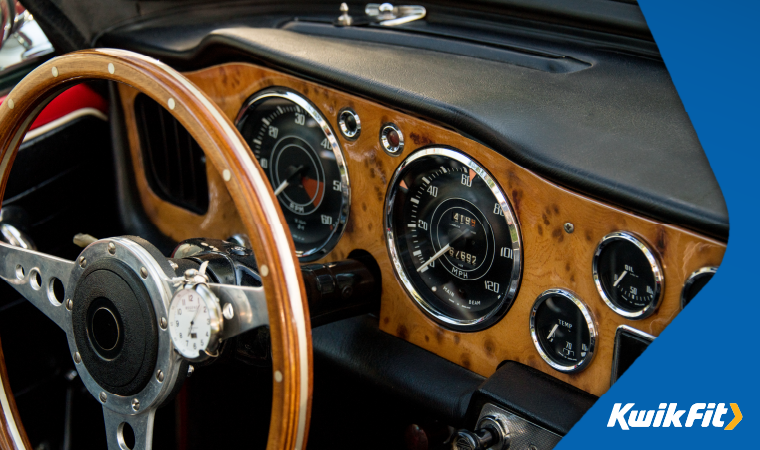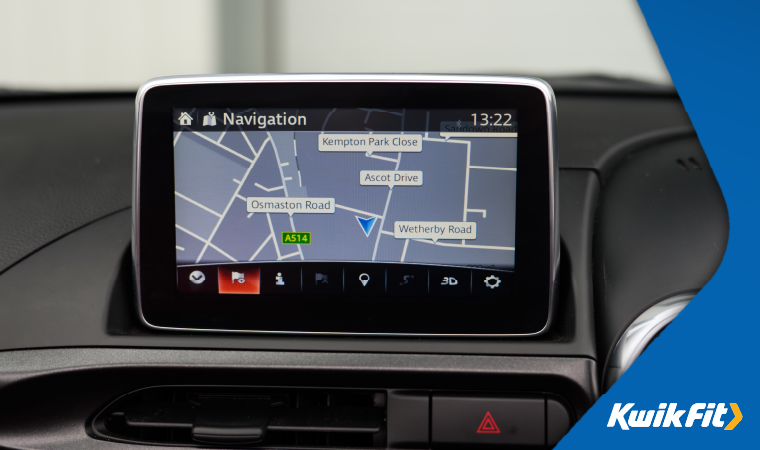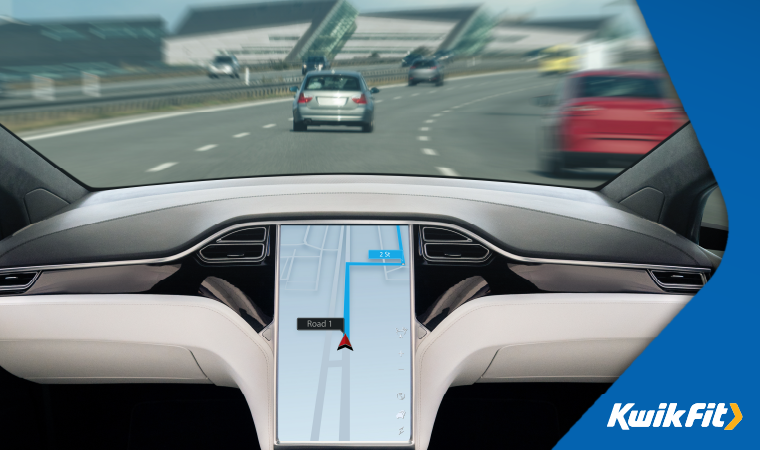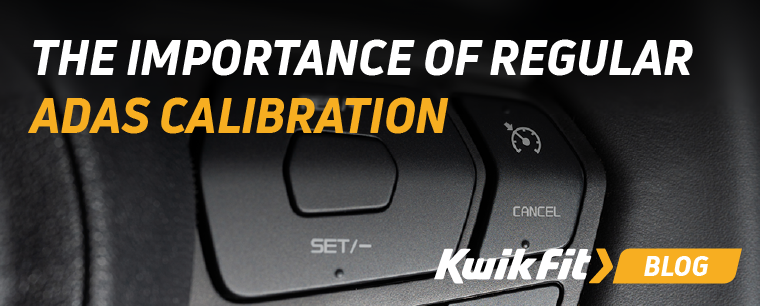The Evolution of Car Dashboard Designs
Kwik Fit | Friday 11th April 2025 10:17am

When was the last time you thought about your car’s dashboard? Points if you’ve ever thought about it beyond “wow, I should really dust that soon.”
What is now an inconspicuous part of our car’s interior — often littered with takeaway packets and receipts — was once the focal point of automotive interior design.
Our modern dashboards have a surprisingly rich history of unusual prototypes and variations that are well worth a trip down memory lane. Wind the clock back a few years, and the drab plastic panelling and leather are replaced by intricate wooden and fabric dashboards.
In this blog, we aim to do justice to an often overlooked part of your car, tracking the dashboard, its functionality, and design - from the basic models when cars were just starting out, to the sophisticated control panels we now drive with.
Mid 1800s: Why it's called a "dashboard"
Our first port of call is the 1800s, when the “dashboard” — in its simplest form — was first invented. Before cars, wealthy individuals had horse-drawn carriages to transport them around. The only trouble was that horses can be quite messy when they trot, kicking up mud and debris behind them.
To prevent Victorian carriage drivers and their passengers from getting their fancy outfits soiled by dirt from the road, a barrier was added between them and the horses — and that is where the dashboard came from. The term “dashboard” itself was first used in 1847 and refers to the action of mud being “dashed up” by the horse's hooves.
Note: Technically, chariots as early as 3,000BC have had guard boards installed to prevent drivers from mud and rocks flicking up from the road, but it wasn’t until much later that they got their name.
Late 1800s: "The horseless carriage"
Towards the turn of the century, horsedrawn carriages began to be widely replaced by a new invention: the motor car. Known fondly as the “horseless carriage” when they first appeared on markets and roads, early automobiles were steam-powered road vehicles (thanks, Industrial Revolution).
For all the change in engine, though, the humble dashboard didn’t undergo too much of a revolution at this stage. Since the horseless carriage still had the same premise as a regular carriage, passengers and drivers still required protection from the dirt and debris “dashed up” from the road. So the dashboard simply changed shape, following the contour of the new steam-powered carriages.
Find out more about early automobiles in our blog, “From Motor Carriage to Today: The Evolution of Cars”.
The first mass-produced dashboard
As more and more people could afford automobiles, manufacturers began to mass produce their parts to meet demand. In 1901, the Oldsmobile company made the gasoline-powered Oldsmobile Model R (also known as the Curved Dash Oldsmobile) which was built on an assembly line, marking the first mass-produced dashboard.
Early 1900s: Heat protection
While the earliest automobiles had their steam-powered engines positioned towards the rear, things began to change in the Twentieth Century. From the early 1900s, motors began to be placed in front of the driver (known as “front-engine layout”) for momentum and weight distribution purposes.
No longer getting muddy from horses or carriage wheels, drivers now needed to be protected from the heat, fumes, and oil from the engine right in front of them — and, thus, the dashboard had a new purpose.
Convenience
It was at this point that the dashboard transitioned from a purely functional piece of kit to an increasingly technical and stylistic car component, too.
Manufacturers noticed that the dashboard was the perfect place to put useful intel pieces like control panels and gauges, triggering the evolution of the modern control panel dashboard that we’re familiar with today.

1930s & 40s: Padding and safety
As the dashboard grew beyond a wooden board to defend against mud and engine heat, comfort and safety were considered in greater depth, leading to innovations that would pave the way for the airbag in later years.
In 1937, a number of cars (including Chrysler, Dodge, and DeSoto models) began to include a safety dashboard, with flush-mounted controls. It was raised above the knee to protect seated passengers, reflecting the lowering and changing shape of the automobile.
The first car to officially have a padded dashboard was the Tucker 48 in 1948 — but it wouldn’t be until the widespread safety enhancements of the 1970s that padded dashboards became common.
1940s-1960s: Technological advancement
In the post-war years, the dashboard (like the car itself) encountered a period of rapid technological advancement alongside an aesthetic transformation.
The Americans led the charge, with aesthetically-shaped dashboard instruments and chrome or silver plastic accents. At this point in time, the faux wood dashboard was very in, lingering into the 1980s - even after European and Japanese manufacturers had begun opting for simpler designs that reduced glare.
A series of analog instruments were added to the dashboard in consumer vehicles from the 40s onwards, including:
- Speedometers
- Tachometers
- Fuel gauges
- Temperature indicators.
1970s: Safety first
Around the time that attitudes towards the seatbelt began to shift (before the law in 1983), other safety features were introduced in passenger cars. Padded dashboards gained traction, typically formed from a polyurethane foam with a PVC surface (or leather, if luxury).
Late 70s & 80s: Things get electronic
In the late 1970s, dashboards got even more technical, with simple dials and gauges being increasingly replaced by more high-tech, electronic alternatives.
In 1976, the Aston Martin Lagonda became the first car to have an electronic instrument cluster (AKA “digital dash”). Slightly later, higher-end cars like the Cadillac Seville came with a ‘Cadillac Trip Computer”, that featured things like:
- A speedometer with a digital readout
- Fuel economy and DTE (distance to empty) figures
- Travel direction
- Outdoor temperature
It wasn’t until 1983 that European hatchbacks went digital in their dashboards, starting with the Renault 11 TSE Electronic.

1990s: Further safety enhancements
The safety enhancements that began in the 1970s were fully realised in the 1990s, with airbags appearing more and more commonly in dashboards. In 1998, it became law for all new cars to come with airbags fitted in their dashboards for safety purposes.
Technological advancements continued, with digital odometers and early infotainment systems beginning to feature in cars and dashes (often with monochrome LCD screens).
Essentially, the 1990s dashboard design did a lot of grunt work, and laid the foundations for the more sophisticated models in the 2010s and beyond that featured touchscreens and navigation systems.
The dashboard today
Nowadays, the modern dashboard is a sight to behold, and miles apart from the original designs. Combining physical aesthetics with digital capabilities, modern dashboards allow for a highly immersive driving experience.
Fully digital instrument clusters and high-resolution touchscreens have transformed the dash, providing real-time data and built-in navigation systems that make driving a car feel more like flying a plane from a streamlined cockpit.
2010s
In the 2010s, the rise of assistive technologies such as ADAS added a whole new layer of integration to the dashboard, helping drivers control their vehicle with features such as:
- Lane assist
- Adaptive cruise control.
2020s+
In the 2020s, smartphone connectivity levelled up to allow for voice recognition and even AI-driven interfaces to emerge. Owing to pioneering models like Tesla, the dashboard looks more futuristic than ever, featuring a clean sweep dash and a central control panel from which to play games, control the cab climate, navigate, and adjust vehicle settings.

The dashboards of the future...
In the coming years and decades, it’s uncertain the direction that dashboard design will take — especially in the advent of self-driving cars. We can imagine a world in which dashboards are entirely touchscreen and have much greater customisation, considering digital user-friendliness at an even greater level. We’ll wait to see.
Keep up with Kwik Fit
While it’s all well and good discussing future innovations, there’s no point thinking forwards if your car is keeping you stuck in the past. Make sure your vehicle is not only roadworthy but future proof, with regular servicing and maintenance at Kwik Fit.
Worried about the safety of your car? Book in for a Free Vehicle Safety Check at your local Kwik Fit today. And, for the latest driving information and updates from the motoring world, keep up to date with the Kwik Fit blog.
Any facts, figures and prices shown in our blog articles are correct at time of publication.
Featured Articles
10 things that can affect your stopping distance
Sunday 6th April 2025
From tread depth to tiredness, read on to learn about 10 factors that can impact your braking distance. Stay safe on the roads with Kwik Fit.
What’s The Difference Between An MOT And A Service?
Tuesday 25th March 2025
Car service vs MOT? Learn the core differences between these two crucial types of vehicle maintenance in our informative blog written by experts.
The Importance of Regular ADAS Calibration
Monday 9th September 2024
Want to know why ADAS calibration is important for vehicle safety & performance? Read our blog to learn more about the impacts of not calibrating your ADAS.









